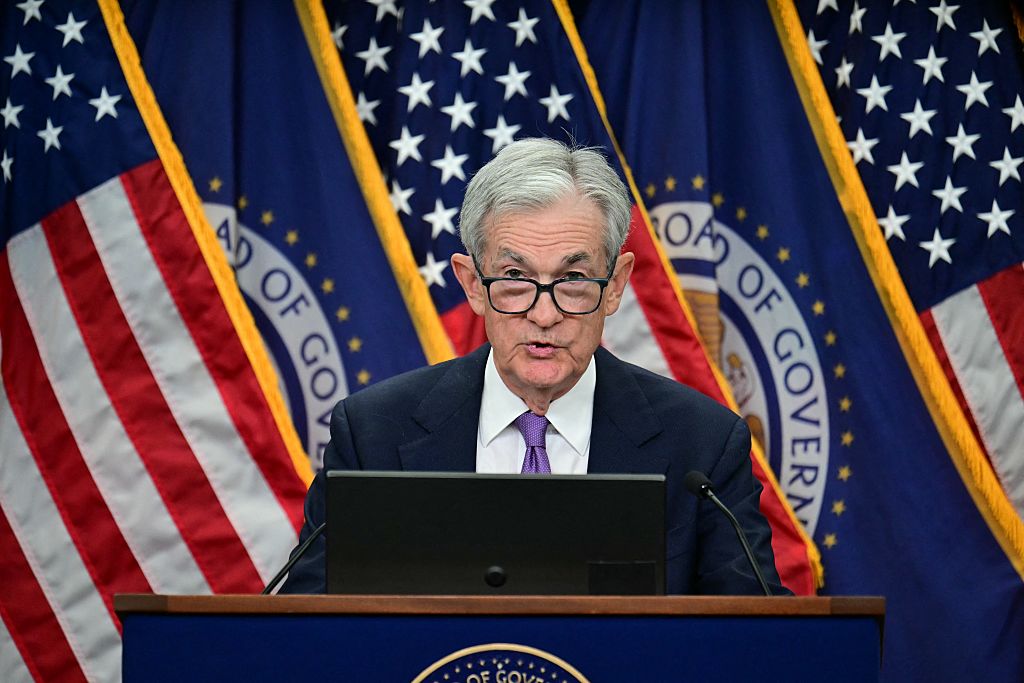A Timeline of the SEC
From the great crash to the flash crash: a timeline of the Securities and Exchange Commission.

The Securities and Exchange Commission is charged with regulating the markets and protecting investors, but the agency's role has varied over its 78-year history. Below, a brief timeline.
1932: Pecora Hearings on Wall Street Abuses
Ferdinand Pecora, a Sicilian immigrant and a former assistant district attorney in New York City, investigates the 1929 stock market crash and its aftermath. Pecora uncovers a range of abusive practices by big banks and their affiliates, fanning the public’s outrage at Wall Street insiders.
1933: Federal Securities Laws Enacted
The Securities Act of 1933, dubbed the “truth in securities law,” requires companies issuing stock to register and to provide a prospectus to potential investors.
From just $107.88 $24.99 for Kiplinger Personal Finance
Become a smarter, better informed investor. Subscribe from just $107.88 $24.99, plus get up to 4 Special Issues

Sign up for Kiplinger’s Free Newsletters
Profit and prosper with the best of expert advice on investing, taxes, retirement, personal finance and more - straight to your e-mail.
Profit and prosper with the best of expert advice - straight to your e-mail.
1934: Securities Exchange Act
The act creates the Securities and Exchange Commission. President Franklin D. Roosevelt taps notorious stock speculator Joseph Kennedy as its first chairman. Critics call Kennedy a “crook.” In response, FDR is said to have quipped, “Takes one to catch one.” In the end, Kennedy proves a committed watchdog.
1940: Investment Company Act and Investment Advisers Act
The acts govern mutual fund companies and require advisers to register with the SEC and to act as fiduciaries -- that is, in the best interests of their customers.
1975: Fixed Commissions Axed
The SEC eliminates fixed-rate commissions, paving the way for discount brokerage firms and turning many investors into do-it-yourself traders.
1986: Ivan Boesky Arrested
After using inside information on mergers and buyouts to amass $200 million in illegal profits, “Ivan the Terrible” is convicted of violating securities laws, sentenced to three years in prison and fined $100 million. Twenty-three years later, the SEC and New York’s district attorney nab hedge fund billionaire Raj Rajaratnam in a wide-ranging probe.
1987: Black Monday
The market drops 23% on October 19. In response, the SEC introduces “circuit breakers” to halt trading if an index drops or rises too far, too fast. In 2010, the SEC extends circuit breakers to individual stocks.
1999: Congress Repeals Glass-Steagall Act
Lawmakers remove impediments to banks’ engaging in securities activities. Ten years later, with banks reeling from losses in bonds backed by shaky mortgages, former Federal Reserve chairman Paul Volcker proposes to prohibit banks from trading for their own accounts. As of February 2012,the SEC is inundated with 17,000 letters commenting on the plan.
2001: Enron Scandal
The energy giant crumbles after revelations of illegal accounting practices. Shareholders lose more than $11 billion. The SEC puts into effect new accounting regulations after passage of the Sarbanes-Oxley Act.
2007: Subprime Mortgage Collapse
The U.S. real estate bubble explodes, causing a vicious ripple effect through global financial markets. The SEC brings dozens of cases, but suffers a setback in 2011 when a judge rejects a settlement between the SEC and Citigroup over the sale of mortgage-backed securities. The SEC appeals the decision.
2008: Madoff Scandal
Bernard Madoff confesses in December to running the biggest Ponzi scheme in history. The SEC is criticized for not detecting the scheme sooner, and an SEC counsel later faces conflict-of-interest questions in the case.
2009: Mary Schapiro Appointed SEC Chairman
The career regulator becomes the 29th head of the SEC and its first female leader.
2010: Flash Crash
On May 6, the Dow Jones industrial average plunges nearly 1,000 points within a few minutes, then quickly recovers. Despite its brevity, the crash dents the confidence of individual investors and focuses attention on automated trading techniques.
2010: Dodd-Frank Act
Congress passes the Dodd-Frank Wall Street Reform and Consumer Protection Act in response to the 2008 financial crisis. The SEC is saddled with the task of drawing up nearly 100 related rules.
Profit and prosper with the best of Kiplinger's advice on investing, taxes, retirement, personal finance and much more. Delivered daily. Enter your email in the box and click Sign Me Up.

Anne Kates Smith brings Wall Street to Main Street, with decades of experience covering investments and personal finance for real people trying to navigate fast-changing markets, preserve financial security or plan for the future. She oversees the magazine's investing coverage, authors Kiplinger’s biannual stock-market outlooks and writes the "Your Mind and Your Money" column, a take on behavioral finance and how investors can get out of their own way. Smith began her journalism career as a writer and columnist for USA Today. Prior to joining Kiplinger, she was a senior editor at U.S. News & World Report and a contributing columnist for TheStreet. Smith is a graduate of St. John's College in Annapolis, Md., the third-oldest college in America.
-
 Are T-Mobile's Prepaid Perks a Home Run or a Strikeout?
Are T-Mobile's Prepaid Perks a Home Run or a Strikeout?T-Mobile's prepaid lineup promises MLB.TV, T-Mobile Tuesdays and hotspot data. But do the perks make it worth switching?
-
 Verizon Home Internet Is Offering Free Tech to New Customers
Verizon Home Internet Is Offering Free Tech to New CustomersVerizon’s latest home-internet promotion includes free tech, but the real savings depend on pricing, speed needs and how long you stay.
-
 Retirees in These 7 States Could Pay Less Property Taxes Next Year
Retirees in These 7 States Could Pay Less Property Taxes Next YearState Taxes Retirement property tax bills could be up to 65% cheaper for some older adults in 2026. Do you qualify?
-
 The November CPI Report Is Out. Here's What It Means for Rising Prices
The November CPI Report Is Out. Here's What It Means for Rising PricesThe November CPI report came in lighter than expected, but the delayed data give an incomplete picture of inflation, say economists.
-
 The Delayed November Jobs Report Is Out. Here's What It Means for the Fed and Rate Cuts
The Delayed November Jobs Report Is Out. Here's What It Means for the Fed and Rate CutsThe November jobs report came in higher than expected, although it still shows plenty of signs of weakness in the labor market.
-
 December Fed Meeting: Updates and Commentary
December Fed Meeting: Updates and CommentaryThe December Fed meeting is one of the last key economic events of 2025, with Wall Street closely watching what Chair Powell & Co. will do about interest rates.
-
 The Delayed September Jobs Report Is Out. Here's What It Means for the Fed
The Delayed September Jobs Report Is Out. Here's What It Means for the FedThe September jobs report came in much higher than expected, lowering expectations for a December rate cut.
-
 3 Major Changes Investors Must Prepare for in 2026
3 Major Changes Investors Must Prepare for in 2026A possible stock market bubble. Trump accounts. Tokenized stocks. These are just three developments investors need to be aware of in the coming months.
-
 October Fed Meeting: Updates and Commentary
October Fed Meeting: Updates and CommentaryThe October Fed meeting is a key economic event, with Wall Street turned into what Fed Chair Powell & Co. did about interest rates.
-
 The Delayed September CPI Report is Out. Here's What it Signals for the Fed.
The Delayed September CPI Report is Out. Here's What it Signals for the Fed.The September CPI report showed that inflation remains tame – and all but confirms another rate cut from the Fed.
-
 What the Rich Know About Investing That You Don't
What the Rich Know About Investing That You Don'tPeople like Warren Buffett become people like Warren Buffett by following basic rules and being disciplined. Here's how to accumulate real wealth.